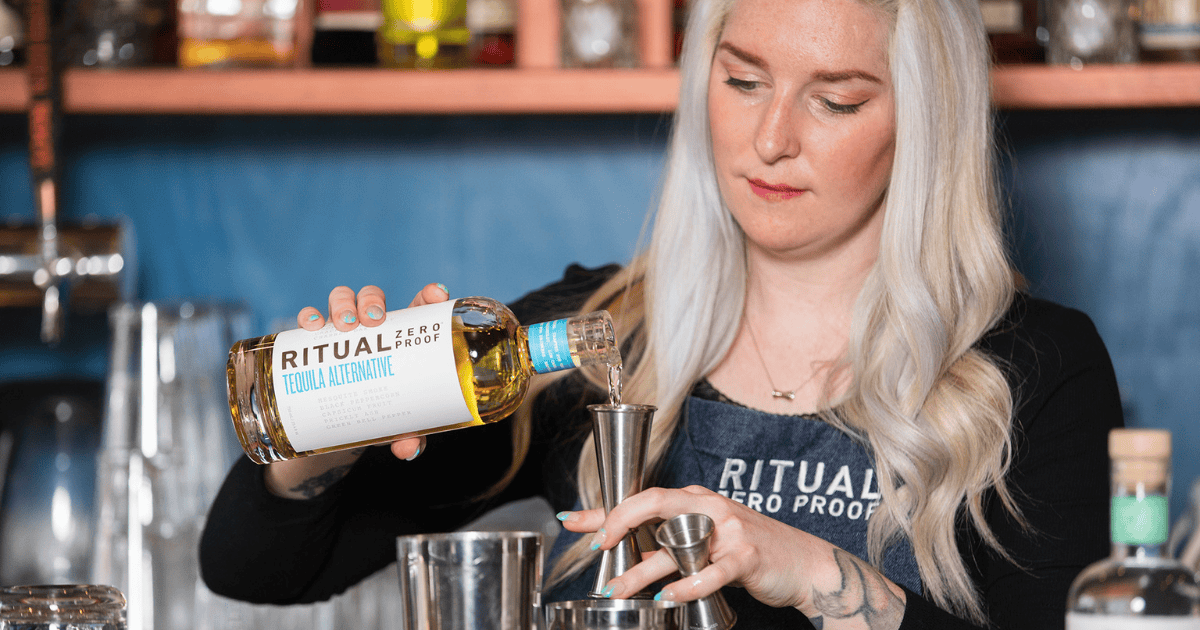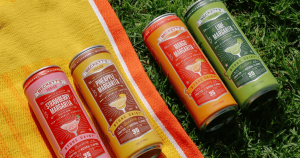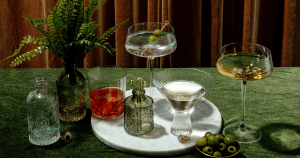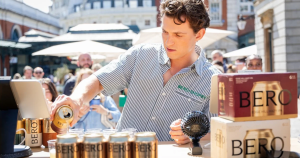In the past ten years, adult non-alcoholic beverages have gone from a curiosity to a category with real staying power.
Non-alcoholic beer is projected to overtake ale as the second-largest beer category worldwide this year, and platforms like DoorDash have reported a generational surge in demand for non-alc options.
Mindful drinking culture has spilled into the mainstream, and brands like Seedlip, Ritual, and Ghia have become household names in both cocktail bars and wellness circles alike.
But amid all the progress, one thing remains unsettled: what exactly do we call this space?
The Challenge of Naming a Category
The phrase “non-alc” has become a common shorthand for drinks crafted without alcohol—everything from dealcoholized wines and beers to sophisticated non-alcoholic aperitifs, novel spirits, and even THC-infused beverages.
It’s a convenient term. But it’s also one that defines a product solely by what it lacks.
For many founders and consumers, this presents a philosophical and strategic issue. As Ben Branson, founder of Seedlip, cautioned in an early interview with Dry Atlas: “If you’re building a brand and the ABV of your brand is a core part of your name or your packaging—dangerous red flags.”
Ben also expanded his concern beyond product branding to the consumer’s self-conception:
“What really gets to me is the term non-drinker. That phrase simply doesn’t make sense. Who walks around calling themselves a non-smoker or a non-pork eater?”
Ben’s critique highlights a larger tension. As the category matures, should its identity continue to be built in opposition to alcohol? Or should it move toward defining itself on its own terms?
A Category That is Both Expanding And Diverging
The ambiguity around language reflects a broader shift within the non-alc category itself. No longer limited to non-alcoholic versions of traditional spirits, wines, beers, and cocktails, today’s offerings include:
- Novel spirits with no traditional analog
- Sophisticated, functional beverages with adaptogens and/or nootropics
- Complex fermented teas
- Sparkling hop waters
- THC-infused beverages
- and much more
The variety is a testament to innovation, but it also muddles the boundaries of the category. While all of these beverages are technically non-alcoholic, they serve very different functions and appeal to distinct consumer motivations.
Some are meant to replace alcohol in social settings. Others are tailored for solo rituals or wellness routines. Some are sober-friendly. Others are not. One Dry Atlas newsletter subscriber recently declared that “Non-alc should only apply to sober-friendly drinks. Not ones with THC.” It’s a valid distinction. But even terms like “adult non-alc” can introduce confusion or unintended connotations.
Is There a Better Framework?
Some have proposed abandoning “non-alc” altogether in favor of more affirmative language. “Alcohol alternatives” has gained traction as a neutral descriptor—one we use frequently here at Dry Atlas—though it still implies substitution rather than independence.
Others advocate for positioning the space around experience. One such term: “social beverages.” It captures the cultural and sensory role these drinks can play in modern hospitality, without tying them directly to alcohol. But, it still excludes common use cases like solo consumption, workday rituals, or wellness-driven routines.
Roman Sydorenko, founder of angel investor syndicate Ace of Cups, believes the entire debate is missing the point. In his view, non-alcoholic doesn’t mean compromised—it means improved. “When Coca-Cola removed cocaine from its formula in the early 20th century, they didn’t rebrand or create a new product line called ‘non-cocaine Cola,’” he pointed out. “They just made a better, safer version and kept the name.”
In Roman’s framing, the evolution of consumer preferences away from alcohol is not a trend, it’s a cultural realignment. And labels that preserve the old paradigm only hold back progress. “Alcohol is a dependence-inducing toxin and a Group 1 carcinogen… The rejection of alcohol isn’t fringe anymore. It’s gaining speed… The future doesn’t need a label that honors the past it’s replacing,” he concluded.
So, Where Does That Leave Us?
There may be no perfect term for this category, at least not yet. As Ben Branson conceded:
“For the last ten years and maybe the next ten, we as a category have been, and will be, defined by what we do not contain. And I’m OK with it. It’s still early, still in recruitment, still far from normalization… Maybe even a generation away from a total shift.”
He draws a parallel to the early days of electric vehicles or plant-based meat: markets that initially relied on negative comparison (non-gasoline, meatless) before eventually earning their own identity and loyal base.
What matters most, Ben emphasizes, is not the language, but the quality.
As the category continues to expand—functionally, culturally, and commercially—the language will likely evolve alongside it. For now, brands and consumers alike are negotiating the middle ground between what was and what could be.
And perhaps that’s fitting. A transitional name for a category in transition.






